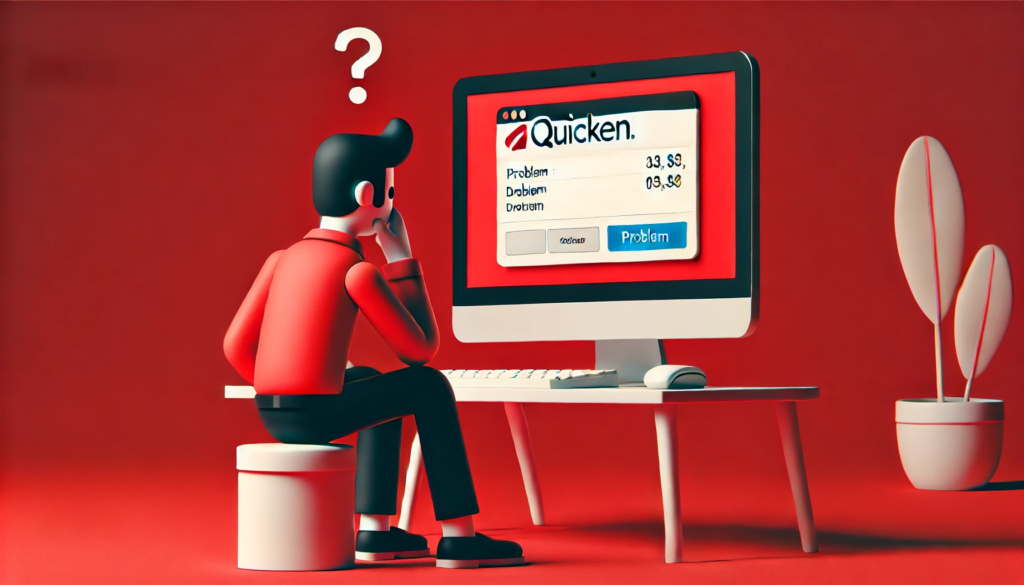Quicken Windows Edition is the desktop version of Quicken software for managing personal finances, spending, and budgeting. If you are moving from another financial manager or receive data from your bank or investment accounts, there are various ways Quicken allows data importing. In this guide, we will provide you with a comprehensive picture of the ways to import information to Quicken for Windows to make the process as smooth as possible.
Read: How to Fix Quicken Error OL-220-A: Step-by-Step Guide
Why Importing Data into Quicken Is Important:
Before discussing the ways, we shall discuss the importance of importing data into Quicken. The following are the reasons why you should import data –
- Help in record keeping: Keeping your records up-to-date can reduce the time lost attempting to synchronize your accounts with those at the bank and the credit card companies from which you have imported.
- Help in record keeping: Record every purchase you make, every payment you receive or make, and every deposit you make and all other transactions to avoid inaccuracies in a financial statement.
- Help in budgeting: There are various spending activity analysis tools integrated into Quicken that can be incorporated; however, this can only happen if some transaction details are imported.
- Help in investment performance: Many would be able to benefit from the importation of different brokerage accounts in order to facilitate comprehension of a stock market.
File Formats Supportable For Data Import in Quicken:
This is vital to figure out as Quicken for Windows supports numerous file types and it would be pointless to try and import any data if no supporting file type is found. The clearly emphasized formats are:
- QFX (Quicken Financial Exchange): This is the most widely accepted method used for importing transactions among many of the banks and institutions.
- QIF (Quicken Interchange Format): This format is mostly useful for importing non-Quicken financial systems transactions from older versions into Quicken.
- CSV (Comma-Separated Values): This is mainly used for importing financial information from Excel sheets or other similar software’s.
- OFX (Open Financial Exchange): It is also considered as other devices facilitation format which is used by some banks and financial institutions.
Understanding what file types are applicable will ease the importation of the data to quicken very fast All the same, it is very important that all the target potential import data be in one of these file types.
Step-by-Step Process to Import Data into Quicken for Windows:
1- Download the File from Your Financial Institution:
Before importing any data into Quicken, you’ll need to download the appropriate file from your bank, credit card provider, or investment platform. Follow these steps:
- Log in to your financial institution’s website.
- Find the section that allows you to download or export all of your transactions.
- If there is a choice, pick the one that outputs in the Quicken (QFX) format. Or, select CSV, QIF, or OFX.
Save the file on your computer’s filesystem but pick a location where you are confident seeing it again.
2- Importing QFX, OFX, or QIF Files::
Transferring QFX, OFX, or QIF documents into Quicken is easy. Here’s how you can do it: Open Quicken for Windows and log in to your account.
- From the top menu, select File > File Import > Web Connect (.QFX) or Import from QIF or OFX depending on the file format that you have.
- Select the option and browse for the file you downloaded earlier.
- Select the account into which you would like to import transactions. In case you don’t have an account set up you have the option to create a new account by selecting Add New Account.
- Check the transactions and categories that come up on the screen.
- Click Finish or OK to complete the import process confirming the import.
3- Importing CSV Files:
CSV files require a bit more manual intervention since they are typically used for data exported from spreadsheets or non-Quicken financial platforms. Here’s how to import a CSV file:
- Open Quicken for Windows.
- From the top menu, select File > File Import > CSV Import (this option may depend on the version of Quicken you are using).
- Browse to find the CSV file on your computer.
- Quicken will prompt you to map your CSV columns to specific transaction fields (like date, amount, and description). This step ensures that the data is organized correctly within Quicken.
- Once mapped, click Import.
- Review the imported data to make sure everything looks correct.
4- Review and Categorize Transactions
There are a lot of transactions imported but the system has put them in different categories and hence requires action. This is what you will do.
- Hopefully, there are no transactions regarding the account that is being used for importing the transactions. Yes, go to the Transactions tab in the respective account.
- Go through any of the existing transactions and make sure that the category, payee, and amount are all correct.
- Categories may also need reassigning or additional information provided probably missing.
- At this point, even after some adjustments have to be made, one is not only able to finish the transaction but has also to ensure that they do not erase all the changes.
5- Account Adjustment;
- Reconciliation of an account means comparing the data that was imported and the balance, which is displayed on the user’s bank account or credit card. This is called reconciliation. This is how one should approach it.
- In the account screen, use the Reconcile feature which is available on the toolbar.
6- Set Up Automatic Downloads (Optional)
If your particular institution’s institution may set up a feature to download your transactions automatically thus you will not have to import files over and over again.
- Modify the options under the Accounts window in Quicken.
- Choose the appropriate account you would like to associate this with.
- Complete the guidance displayed on-screen to create a connection with your bank or brokerage through Direct Connect / Express Web Connect.
- This way, after you successfully establish a connection and do an update, the transactions are downloaded automatically by Quicken.
Troubleshooting Common Issues:
1- File Not Supported:
If Quicken does not recognize the file format, make sure you’re using a supported file type (QFX, QIF, CSV, or OFX). Check with your financial institution if you have trouble downloading the correct format.
File normal from America:
Duplicate Transactions:
This is another issue that you can experience sometimes when you manually import your transactions. To resolve the issue, the following steps may be followed.
- Use Quicken’s inbuilt duplicates checker: import history in Quicken will logically and quite often surprise most jerks. Quicken will detect the duplicates and will ask in most cases ‘Do you want to Merge?’
- Override this by addressing duplicates manually.
CSV Data Mapping Issues::
If your data doesn’t import correctly from a CSV file, make sure you’ve correctly mapped the fields. Double-check the CSV file to ensure that dates, amounts, and descriptions are consistent and clearly labeled.
Conclusion:
To allow its users to create a complete financial picture, the application Quicken for Windows performs data Importing quite well. The users may experience imports of files that contain credit card or bank transactions or data files in the forms of QFX, QIF, or CSV. Once your data is imported, you can create a report of your daily expenses, prop up a budget, as well as handle the investment.
To make auto-updates, rather than performing the entire set of manual chores at the backend, many opt to perform auto-updates via the QFX format. Following these steps will help you appreciate how easy it is to manage your finances with the application Quicken for Windows.





